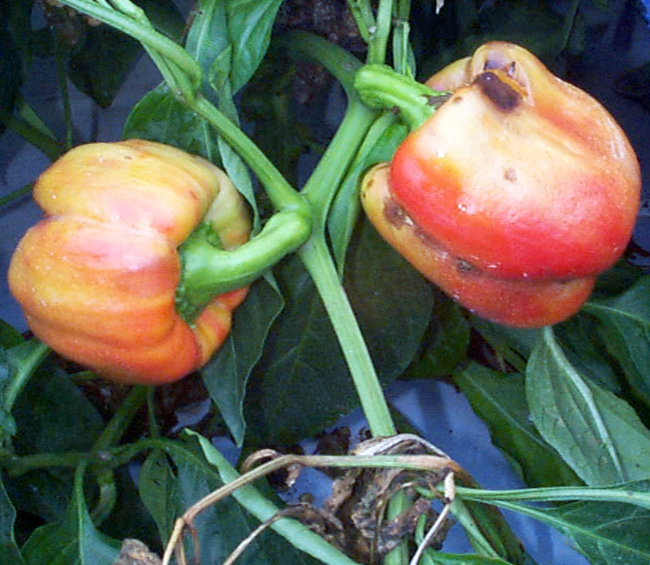|
American Hop Latent Virus
''American hop latent virus'' (AHLV) is a plant pathogenic virus of the family ''Betaflexiviridae''. Its genome is about 8,600 nucleotides in length with a 3'-polyadenylate tail that contains a total of six open reading frame In molecular biology, open reading frames (ORFs) are defined as spans of DNA sequence between the start and stop codons. Usually, this is considered within a studied region of a prokaryotic DNA sequence, where only one of the six possible readin ...s. References External linksICTVdB - The Universal Virus Database: American hop latent virus Carlaviruses Viral plant pathogens and diseases [...More Info...] [...Related Items...] OR: [Wikipedia] [Google] [Baidu] |
Plant Virus
Plant viruses are viruses that affect plants. Like all other viruses, plant viruses are obligate intracellular parasites that do not have the molecular machinery to replicate without a host. Plant viruses can be pathogenic to higher plants. Most plant viruses are rod-shaped, with protein discs forming a tube surrounding the viral genome; isometric particles are another common structure. They rarely have an envelope. The great majority have an RNA genome, which is usually small and single stranded (ss), but some viruses have double-stranded (ds) RNA, ssDNA or dsDNA genomes. Although plant viruses are not as well understood as their animal counterparts, one plant virus has become very recognizable: ''tobacco mosaic virus'' (TMV), the first virus to be discovered. This and other viruses cause an estimated US$60 billion loss in crop yields worldwide each year. Plant viruses are grouped into 73 genera and 49 families. However, these figures relate only to cultivated plants, which r ... [...More Info...] [...Related Items...] OR: [Wikipedia] [Google] [Baidu] |
Betaflexiviridae
''Betaflexiviridae'' is a family of viruses in the order ''Tymovirales''. Plants and fungi serve as natural hosts. There are 108 species in this family, assigned to 13 genera in two subfamilies. Diseases associated with this family include mosaic and ringspot symptoms. Taxonomy The following subfamilies and genera are recognized: * '' Quinvirinae'' ** ''Carlavirus'' ** '' Foveavirus'' ** '' Robigovirus'' ** Plus three unassigned species: *** '' Banana mild mosaic virus'' *** ''Banana virus X'' *** ''Sugarcane striate mosaic-associated virus'' * '' Trivirinae'' ** '' Capillovirus'' ** '' Chordovirus'' ** ''Citrivirus'' ** '' Divavirus'' ** '' Prunevirus'' ** '' Ravavirus'' ** '' Tepovirus'' ** ''Trichovirus ''Trichovirus'' is a genus of viruses in the order ''Tymovirales'', in the family ''Betaflexiviridae''. Plants, specifically angiosperms such as pome fruits, citrus, and pear, serve as natural hosts for this plant pathogen. There are seven spe ...'' ** '' Vitivirus'' ** ... [...More Info...] [...Related Items...] OR: [Wikipedia] [Google] [Baidu] |
Polyadenylation
Polyadenylation is the addition of a poly(A) tail to an RNA transcript, typically a messenger RNA (mRNA). The poly(A) tail consists of multiple adenosine monophosphates; in other words, it is a stretch of RNA that has only adenine bases. In eukaryotes, polyadenylation is part of the process that produces mature mRNA for translation. In many bacteria, the poly(A) tail promotes degradation of the mRNA. It, therefore, forms part of the larger process of gene expression. The process of polyadenylation begins as the transcription of a gene terminates. The 3′-most segment of the newly made pre-mRNA is first cleaved off by a set of proteins; these proteins then synthesize the poly(A) tail at the RNA's 3′ end. In some genes these proteins add a poly(A) tail at one of several possible sites. Therefore, polyadenylation can produce more than one transcript from a single gene (alternative polyadenylation), similar to alternative splicing. The poly(A) tail is important for the nuclea ... [...More Info...] [...Related Items...] OR: [Wikipedia] [Google] [Baidu] |
Open Reading Frame
In molecular biology, open reading frames (ORFs) are defined as spans of DNA sequence between the start and stop codons. Usually, this is considered within a studied region of a prokaryotic DNA sequence, where only one of the six possible reading frames will be "open" (the "reading", however, refers to the RNA produced by transcription of the DNA and its subsequent interaction with the ribosome in translation). Such an ORF may contain a start codon (usually AUG in terms of RNA) and by definition cannot extend beyond a stop codon (usually UAA, UAG or UGA in RNA). That start codon (not necessarily the first) indicates where translation may start. The transcription termination site is located after the ORF, beyond the translation stop codon. If transcription were to cease before the stop codon, an incomplete protein would be made during translation. In eukaryotic genes with multiple exons, introns are removed and exons are then joined together after transcription to yield the final ... [...More Info...] [...Related Items...] OR: [Wikipedia] [Google] [Baidu] |
Viral Plant Pathogens And Diseases
Viral means "relating to viruses" (small infectious agents). Viral may also refer to: Viral behavior, or virality Memetic behavior likened that of a virus, for example: * Viral marketing, the use of existing social networks to spread a marketing message * Viral phenomenon, relating to contagion theory or the "virality" of network culture, such as a meme * Viral video, a video that quickly attains a high popularity Titled works * ''Viral'' (2016 American film), a 2016 American science fiction horror drama * ''Viral'' (2016 Hindi film), an Indian Bollywood film based on social media * ''Viral'' (web series), a 2014 Brazilian comedy web series * '' V/H/S: Viral'', an American anthology horror film * '' Viral: The Search for the Origin of COVID-19'', a book by Alina Chand and Matt Ridley See also * ''Virals'', a novel series by Kathy Reichs * Virulence Virulence is a pathogen's or microorganism's ability to cause damage to a host. In most, especially in animal system ... [...More Info...] [...Related Items...] OR: [Wikipedia] [Google] [Baidu] |

